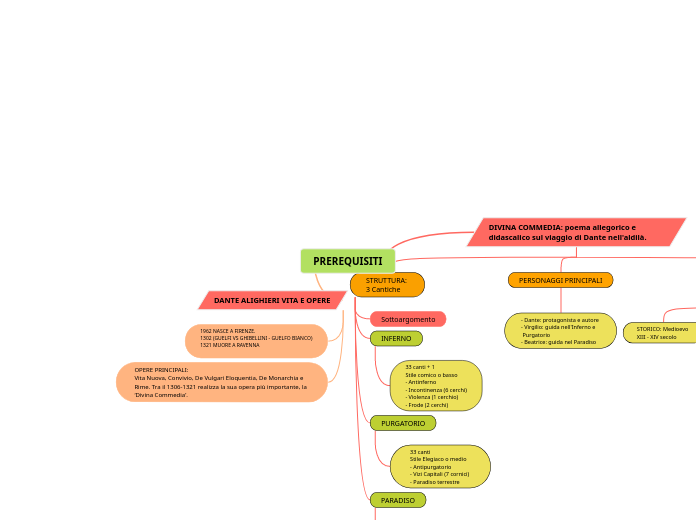Tanti modi di abitare
To name your story, you have to think about the overall message and what you want your audience to understand from the story. Also, make it relevant and easy to remember.
Nel mondo contemporaneo
The ending of a story is essential. We all know that if the ending is weak, what happened before loses its importance. So make it unpredictable, but fair. A resolved ending answers all the questions and ties up any loose threads from the plot.
casa ci rappresenta
This is the closure section of the story.
See examples of possible outcomes below:
- all problems have been solved
- it's clear how each one of your characters ends up
- your main character is transformed by the challenge
introversa, arredamento essenziale che ci protegge dl mondo esterno.
estroversa, arredamento che rappresenta come vorremmo essere
Try answering these questions to come up with a closure:
- Have all the problems been solved?
- Is there a clear picture of what happens with each character in the story?
- Has the challenge transformed your main character?
- How do the characters feel in the end?
casa
This is the moment when the main character surpasses the last obstacle and finally faces their greatest challenge.
The climax usually follows one of these patterns:
- realization
- resolution
- choice
Type in your answer.
How does your main character finally solve the problem?
L'interno delle abitazioni
The middle of the story is where you add layers of complications that will lead to the end. Reveal more about the character's journey. Did their personality go through changes? How did they overcome the challenges? And as you build up the story’s central conflict, make it more personal to that character. Also, from the middle act, you have to lead into the final act.
OBSTACLES
There wouldn't be any tension and excitement in your story if there weren't any obstacles in your character's way.
What prevents your character from accomplishing their goal?
A story is nothing more than a character overcoming a series of difficulties to reach the desired goal. Obstacles usually create suspense and conflict. In overcoming obstacles, there is growth: weak becomes strong; hatred turns into love; sadness into happiness; wrong into right; lies into truth; or evil becomes good.
See a few examples below:
- stopping a meteor
- finding a killer
- finding love
Obstacles
casa dei ricchi borghesi
Your character(s) need(s) motivation in order to solve the challenge(s).
palazzi maestosi
Why does your character need to confront this challenge? What does he/she expect to accomplish by solving it?
See a few examples:
- will marry in 3 days
- can fix the mistakes of the past
pochi mobili, decorati, dipinti. Casse finemente decorati; cofanetti per gioielli.
architetti, pittori e scultori per status symbol
case degli artigiani
Each story has a main character and that character usually needs to solve a problem or challenge. The character's challenge is the one that creates tension throughout the story.
cucina
Type in any other challenges which other characters in the story need to face.
un camino con cappa rialzata con un calderone, uno spiedo e graticola con panche laterali
letto a panca, ad armadio o a baldacchino
In most stories, there are 3 challenges. The number 3 is a mystical number symbolizing completeness. Try to come up with interesting challenges with which your character needs to struggle.
See a few examples below:
- turns into a werewolf at night
- is sent back in time
i tavoli erano assi di legno su cavalletti da spostare per la notte
i vestiti venivano tenuti in panche di legno; i letti erano pagliericci che venivano abballinati di giorno
Nell'Alto e Basso Medioevo
In the beginning of the story (or the exposition), you will need to introduce the setting and characters. You might also want to introduce the main conflict. This part of the story is important because it gives the reader necessary background information and maybe even a first insight into a character’s personality.
casa dei ricchi
The setting (time & place) of a story can change throughout the plot.
borghesi
The time of the story can also change. It can describe the event of a single day or can include an entire year's plot. Anyway, don't forget to mention it.
in città, palazzi sulla via centrale su 3 o 4 livelli con torrione per la difesa.
nobili
Your story can take place wherever your imagination will take you to.
For example: in an elevator, in an enchanted forest, etc. Don't forget to give details of the environment each time the setting changes, otherwise, the story can be confusing. Also, mention the seasons as each of them has unique weather and events.
castelli che erano fortificazioni private e difendevano il villaggio che sorgeva intorno con case di pietra e legno.
Casa dei poveri
Characters are essential to a good story. Usually, the protagonist(s) is/are the most affected by the plot. Introduce a character by focusing on their actions, interests, and occupation, as the physical appearance doesn't make a difference in most cases.
contadini e operai
Type in the name of your character.
in città, gli artigiani vivevano in case-bottega periferiche a due livelli collegati da una scala di legno, con la bottega sotto e una stanza con letto e cucina sopra; vi è l'ammezzato come deposito per il laboratorio o la bottega.
Which traits best describe the character's personality? Choose more if necessary:
introvertedloyalkindindependentquick-thinkingadventuresomeidealisticsweet-naturedcalmrisk-takercreativewittystrictfussyweirdclumsyharshaggressivecarelessclingingcowardlycrueldeceitfulimpulsiveOther
in campagna attorno ai castelli dimore di una stanza con una sola luce, di pietra e legno male illuminate e male aerate, vivevano con le bestie domestiche
Choose the type of your chacter:
Protagonist (main character)Antagonist (main character's opponent)Flat (stereotypical character)Round (his/ her personality develops throughout the story)Static (doesn't evolve as a person throughout the story)Dynamic (dramatical change in personality)Confidant (the main character trusts him/ her)Foil (contrasting character who enhances the personality of another character)Other










